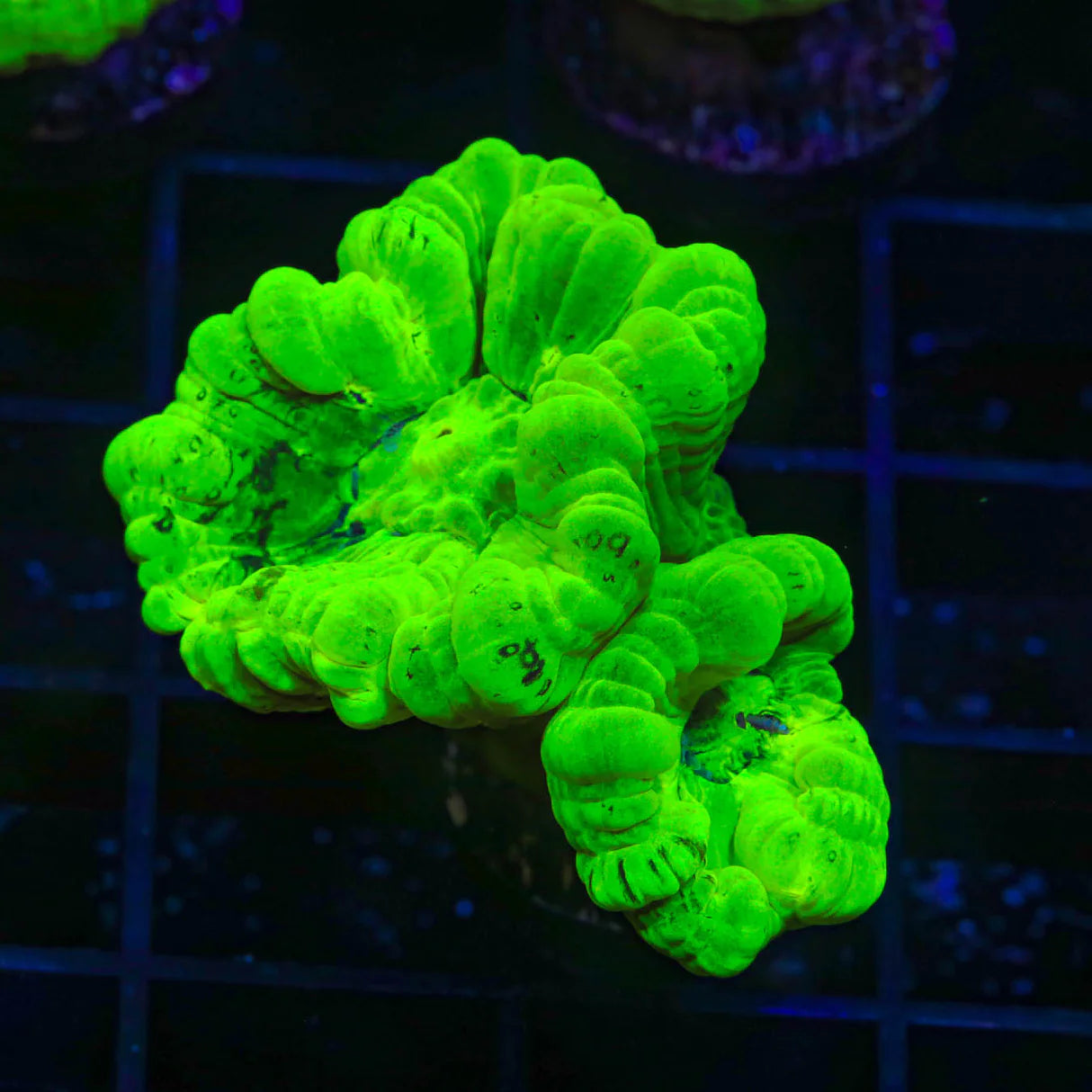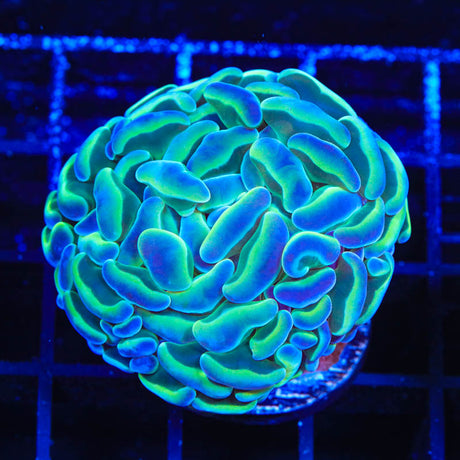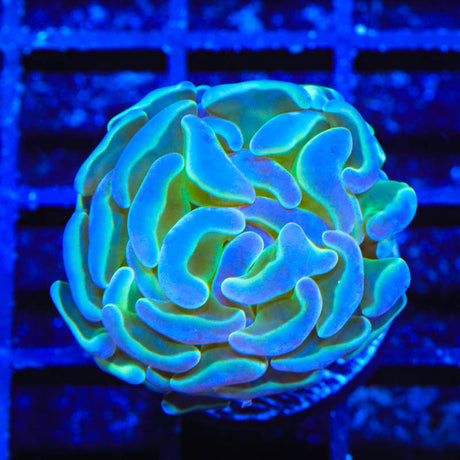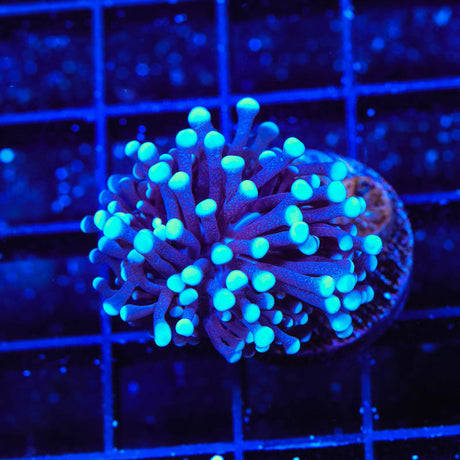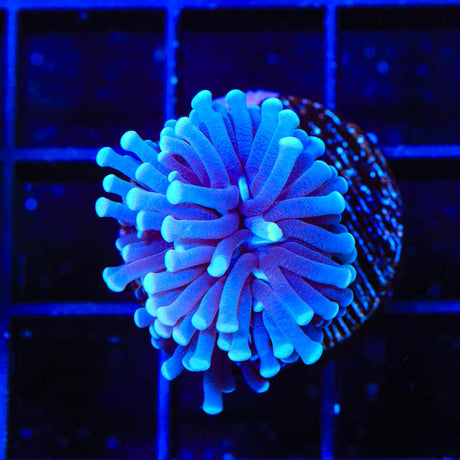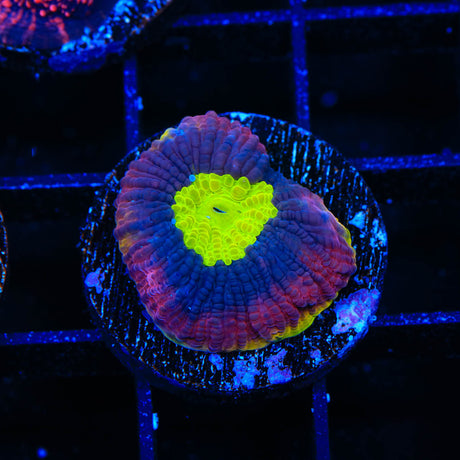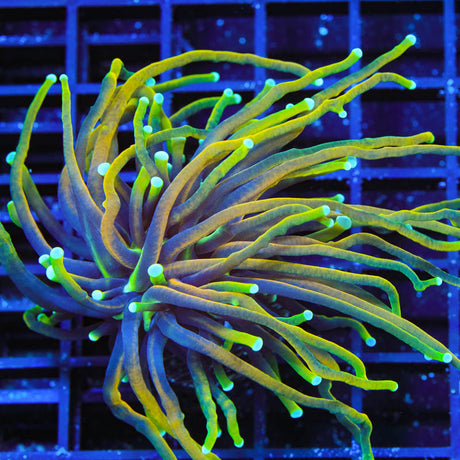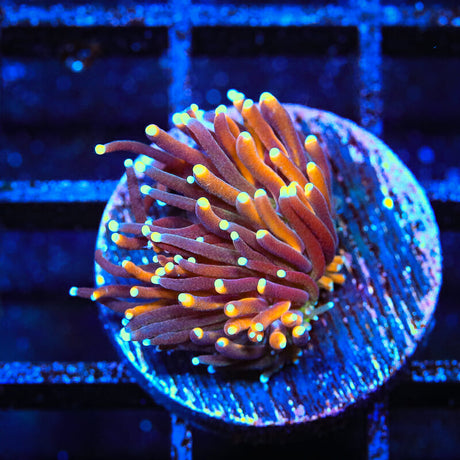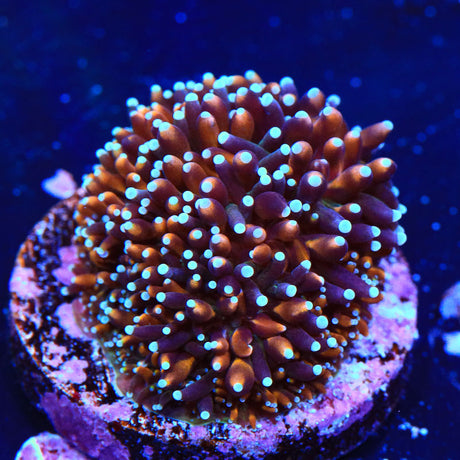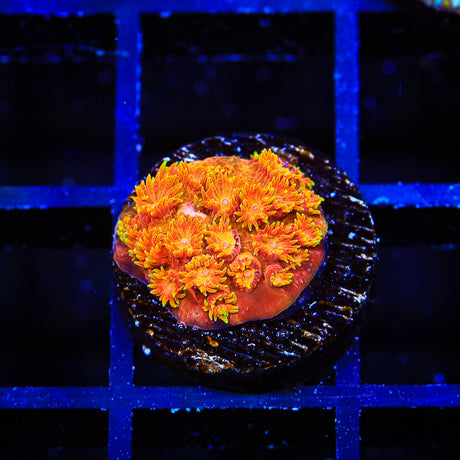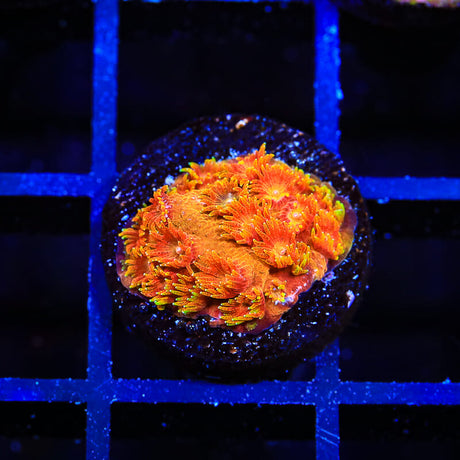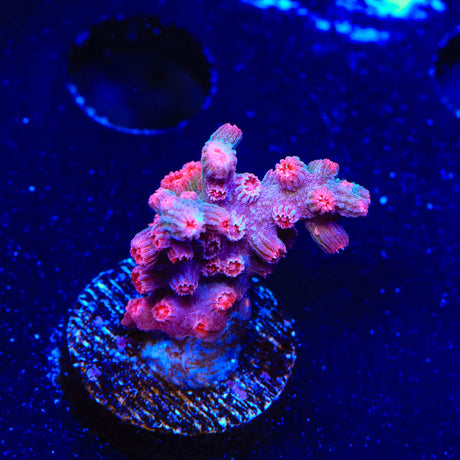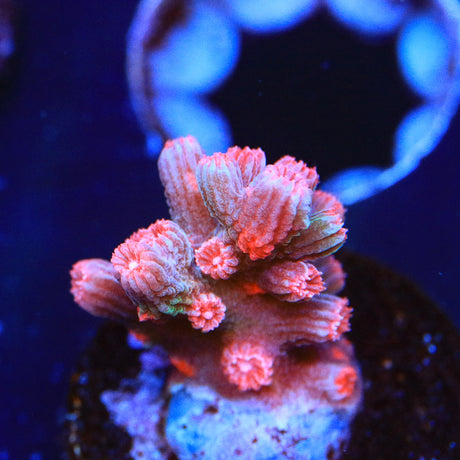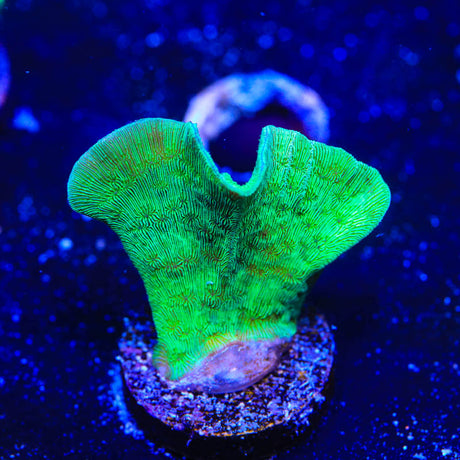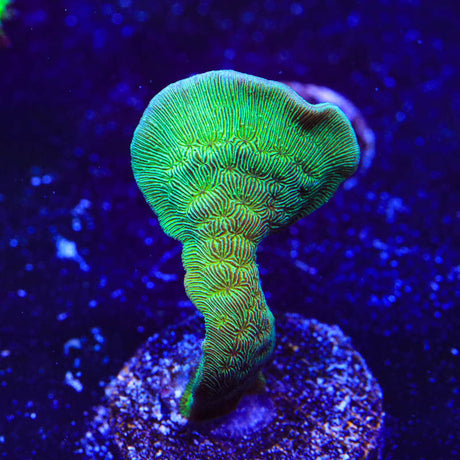Candy Cane Corals
Trumpets, also known as candy cane coral, belong to the Caulastrea coral species, though the recent introduction of the genus Astraeosmilia now splits this type of coral up. This coral is a widely popular choice for a beginner reef hobbyist.
Candy cane corals are a common aquacultured species that are abundantly available and well acclimated to captive environments. Two stunning examples are Top Shelf Aquatics Kryptonite and Cursed Candy Cane, which have been aquacultured for nearly a decade.
Caulastrea coral, another candy cane coral type, has bony, stalk-like skeletal structures that split into individual polyps or heads. The polyps are typically round-shaped with inflated ruffled edges. These corals are commonly seen in various shades of greens and blues. Recently, bicolored and highly fluorescent variants are becoming more readily available.
Candy Cane Coral Care
Tolerant of many environmental conditions, candy cane coral thrives in moderate lighting and flow. Long-term captive propagation has made them durable and hardy aquarium inhabitants. candy cane corals are best kept in the mid to lower portion of an aquarium, where the lower flow will help the polyp inflate to its fullest.
On rare occasions, candy cane corals can extend a sweeper tentacle, which can reach up to 2 inches in length. It is best to keep these corals a few inches away from other corals to avoid any chemical warfare.
The growth of candy cane corals can be accelerated by feeding. Each of its polyps has their own mouth and can each be fed individually. At Top Shelf Aquatics, we use a combination of Benepets powdered coral food, Fauna Marin LPS Pellets, PE Mysis and Calanus – all of which promote faster growth.
If you’re a beginner hobbyist, you can’t go wrong with adding a candy cane coral to your system. It’s a rewarding coral to begin with and will only become more striking as it develops into a colony.

